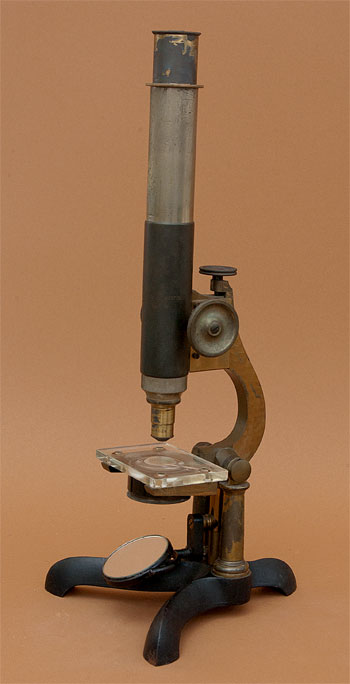This is a monocular microscope on a metal three-pronged base made by the Bausch & Lomb company of Rochester NY. The microscope is monocular with a huygenian eyepiece and an achromatic objective made by the Spencer company of Buffalo NY. The body is supported by a double pillar base and curved support arm. At the top of the curved arm is the short-arm fine focus. The microscope tube is mounted also to the top of the support arm, and moves via rack and pinion. The rack is machined into the tube. The sample stage is a rectangular glass plate with hole in the center. Below the stage is a circular spring mount for the glass condenser lens. There are no stage clips. The instrument is hinged in the middle at the top of the support pillars, which allows it to be tilted to fully horizontal. Marked under the left-side coarse adjustment screw: “Patented Oct. 3, 1876.” Imaging is poor because of poor contrast. The name of the firm is engraved on the microscope body.
Bausch and Lomb was founded in 1853 by John Jacob Bausch (1830-1926) and funded by Henry Lomb (1828-1908). Initially the company made monocles and Vulcanite eye glasses frames, but with the addition in 1876 of Ernst Grundlach (1834-1908) the company began manufacturing microscopes. In 1892 they formed a cooperation with Carl Zeiss and began making lenses. By the end of the 19th Century Bausch & Lomb was famous for manufacturing high-quality optical devices such as microscopes, binoculars, projectors, cameras, and eyeglasses. The company exists to this day.






